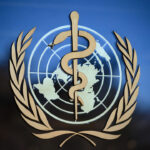
Cervical cancer.
Government, institutions, donors and partners have announced a new commitment with nearly $600 million in new funding to expand vaccine coverage of human papillomaviruses (HPV), increase screening and treatment programmes and, ultimately, eliminate cervical cancer.
This commitment was announced, yesterday, at the maiden Global Cervical Cancer Elimination Forum to boost national and global efforts to end this preventable disease and to offer a chance to save hundreds of thousands of lives by 2030.
According to WHO, a woman dies from cervical cancer every two minutes regardless of the existence of the knowledge and tools needed to prevent and eliminate the disease. It described it as the fourth most common cancer in women worldwide, especially among families in low and middle-income countries (LMICs).
Cervical Cancer is a malignant tumour of the lower part of the uterus (womb) that can be prevented by PAP smear screening and a HPV vaccine. Vaccination against HPV, which is the leading cause of cervical cancer, can prevent the vast majority of cases and, combined with screening and treatment, provides a path to elimination.
WHO Director-General, Dr Tedros Adhanom Ghebreyesus, at the forum said: “This first global forum is an important opportunity for governments and partners to invest in the global elimination strategy and addressing the inequities that deny women and girls access to the life-saving tools they need.
“We have the knowledge and the tools to make cervical cancer history, but vaccination, screening and treatment programmes are still not reaching the scale required.”
Democratic Republic of the Congo has expressed commitment to start introducing the HPV vaccine as early as possible, using the WHO-recommended single-dose schedule. It also committed to doing everything to get, as early as possible, to the cervical cancer elimination strategy immunisation coverage target for girls, aged 9 to 14 years.
Nigeria has also launched its HPV vaccine national programme this year, adopting the single-dose schedule for girls nine to 14 years old and also is committed to achieving, at least, 80 per cent vaccine coverage of girls.
It is committed to continuing to increase coverage of the HPV vaccine through a robust delivery strategy that will meet the girls where they are. For girls who are in school, they will concentrate on school-based delivery; for girls that are not in school, they will commit to implementing outreach activities at key moments in the year, with the target of at least 80 per cent coverage of girls targeted by 2026.
According to the report by WHO, there are many challenges on the path to elimination. Due to supply constraints, delivery challenges, and the COVID-19 pandemic, just one in five eligible adolescent girls was vaccinated in 2022. And while there are cost-effective and evidence-based tools for screening and treatment, fewer than 5 per cent of women in many LMICs are never screened for cervical cancer.












